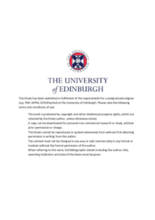Abstract
Under Section 34 of the Children Act 1989 local authorities have a legal duty to make every effort to ensure that a child in care can maintain links with his/her birth parents and other wider family members. For a child in care contact enables him/her to continue seeing certain members of their family, in the main, birth parents. The type of contact that a child in care can have consists of direct contact (face-to-face meetings that are supervised or not) and indirect contact (telephone calls, letters and/or photographs). Traditionally contact for children in care and their birth families has been organised by social work practitioners and supported by foster carers.
The advent of mobile communication devices such as the smartphone; tablets and computers, as well as social media and other apps for example, WhatsApp have changed the way in which individuals now communicate. These changes in communication have also begun to impact fostering in the form of children in care and their birth parents making use of texting, email and social networking sites for contact that is not allowed or supported by social work practitioners. Unlike the traditional methods of contact for children in care and their birth families, as users of these mobile communication devices they have at their disposal a way to communicate that incorporates privacy; flexibility and choice. For children in care there is also the added benefit of increased connectivity to people within their familial and friendship networks via a range of devices and platforms. These developments have led to difficulties and challenges for foster carers and social work practitioners potentially in the form of placement breakdowns and on occasions, continued abuse by a birth parent towards a child in care.
The research that is available on this new phenomenon of contact has only begun to ask questions in relation to the practice, but there are gaps that include a lack of consideration as to the concept of contact in terms of the power differentials that are present, and the ability of children in care to negotiate the world around them as social actors in their own right. This empirical study that made use of a research paradigm of interpretivism and influences from the Foucauldian conception of power attempts to fill these gaps by asking three questions. The first is, are children in care making use mobile communication devices for contact with members of their familial and friendship networks, and if so, how. The second question is to what extent devices like the smartphone, tablets and computers either improve or hinder the communication that takes place between children in are and members of the familial and friendship networks. The final question is, how contact using mobile communication devices and Internet is being managed by foster carers and social workers.
A key finding from the study was that the young people in care were not passive recipients of their familial and friendship networks. They did not deem their interaction with friends and family via mobile communication devices and the Internet as contact, but rather as staying in touch. The characteristics of this new phenomenon of contact included immediacy and reach, communication in real time and duration which enabled them to control the who, how and when of staying in touch. However, this new found freedom was affected by the continual disciplinary gaze that the young people in care were subject to by foster carers and social work practitioners. A gaze which was motivated by a continuing rhetoric of vulnerability and risk.
The approach to monitoring and management of mobile communication devices and the Internet by foster carers exposed a complex picture of surveillance and monitoring, as well as day to day management that saw the use of parenting practices that consisted of physical tasks completed by the foster carer and the child in care, and also monitoring software.

